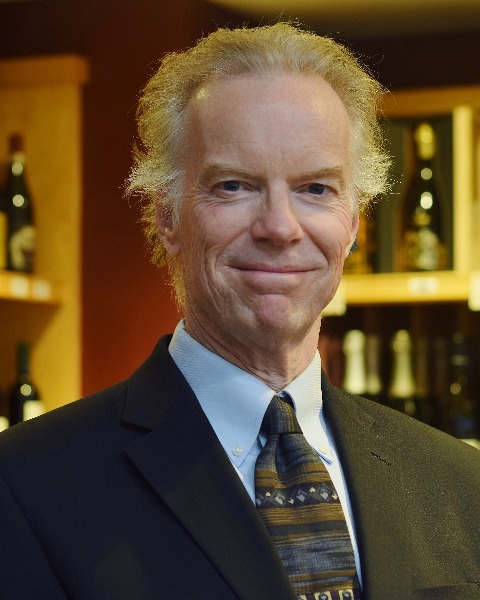Industry Sessions PSMA
PSMA Session
IS02.1 - Capacitors and Aircraft Power System Considerations for Higher Temperature Operation and Wide Bandgap Enablement
Tuesday, March 18, 2025
8:30 AM - 8:55 AM ET
Location: Level Four, A411

Roger A. Brewer
Lockheed Martin
Industry Session Presenter(s)
Presentation Description: The evolving and challenging demands placed on electronics when installed on a modern Aircraft, driven largely by environment (high ambient heating, vibration, etc.) could not be any timelier for focused attention. To serve as an introduction on this topic, an overview of a modern aircraft (very generalized) power system that might leverage a high-power density Wide Bandgap-based supply and the associated electrical usage needs that, in turn, drive thermal management challenges on electronics will set the opening stage.
Following the introduction there will be more in-depth discussion regarding what limits upper temperature operating range for many existing capacitor technologies (ultracapacitors, film capacitors and ceramic capacitors) which are a key bottleneck in expanded temperature range for many power electronics and avionics systems within an aircraft. Mechanical fatiguing effects and material limitations within capacitor cells will be illustrated and shown to contribute to these component limitations. The equation for capacitance will be utilized to draw attention into how capacitor cell structure (distance “d” between plates and area “A” of plates) attributes impact attainable capacity and power (irrespective of temperature considerations) prior to turning attention to the next part of the talk.
The core of the talk will next turn to addressing the Technology Readiness Level (TRL) of specific film capacitor variations in stages of development. Film capacitors, often used in power conditioning and filtering systems associated with power generation AC sources (in the 10kW and above range and above 50V to the power bus) of advanced aircraft, have critical advantages which will be addressed. Less mature capacitor concepts utilizing the Ultrawide Band Gap (UWBG) class of materials as a dielectric medium to further enhance performance in passive component devices (create very high voltage standoff capable energy storage) will next be briefly highlighted. A focus will next aim to address a key theme regarding how a theoretical, UWBG-based capacitor “core cell” needs a robust packaging scheme (lead to electrode, e.g. “beyond the cell” level) to achieve greater temperature range and improved reliability (e.g. robustness for high vibration environments). The relevance of packaging form-factor (cylindrical, surface mount) in limiting temperature range envelope of capacitors will also be addressed based on a combination of mechanical and electrical stressing (potentially high ripple typical of WBG supplies) events, i.e.:
“It’s not just about the cell level improvements in making robust capacitors for aircraft”
A noteworthy conclusion will emphasize how various performance benefits achieved in a given capacitor type (large Farads per in^3) may sacrifice other needed performance benefits (temperature range). With all these various factors throughout the talk provided, a holistic technology roadmap for future, higher temperature capable capacitor technology development will be provided to form a conclusion and serve the notion that peripheral devices to accompany a WBG-based supply are ripe for innovation.
-- Approved for Public Release via LM PIRA #AER2023110406 --
Following the introduction there will be more in-depth discussion regarding what limits upper temperature operating range for many existing capacitor technologies (ultracapacitors, film capacitors and ceramic capacitors) which are a key bottleneck in expanded temperature range for many power electronics and avionics systems within an aircraft. Mechanical fatiguing effects and material limitations within capacitor cells will be illustrated and shown to contribute to these component limitations. The equation for capacitance will be utilized to draw attention into how capacitor cell structure (distance “d” between plates and area “A” of plates) attributes impact attainable capacity and power (irrespective of temperature considerations) prior to turning attention to the next part of the talk.
The core of the talk will next turn to addressing the Technology Readiness Level (TRL) of specific film capacitor variations in stages of development. Film capacitors, often used in power conditioning and filtering systems associated with power generation AC sources (in the 10kW and above range and above 50V to the power bus) of advanced aircraft, have critical advantages which will be addressed. Less mature capacitor concepts utilizing the Ultrawide Band Gap (UWBG) class of materials as a dielectric medium to further enhance performance in passive component devices (create very high voltage standoff capable energy storage) will next be briefly highlighted. A focus will next aim to address a key theme regarding how a theoretical, UWBG-based capacitor “core cell” needs a robust packaging scheme (lead to electrode, e.g. “beyond the cell” level) to achieve greater temperature range and improved reliability (e.g. robustness for high vibration environments). The relevance of packaging form-factor (cylindrical, surface mount) in limiting temperature range envelope of capacitors will also be addressed based on a combination of mechanical and electrical stressing (potentially high ripple typical of WBG supplies) events, i.e.:
“It’s not just about the cell level improvements in making robust capacitors for aircraft”
A noteworthy conclusion will emphasize how various performance benefits achieved in a given capacitor type (large Farads per in^3) may sacrifice other needed performance benefits (temperature range). With all these various factors throughout the talk provided, a holistic technology roadmap for future, higher temperature capable capacitor technology development will be provided to form a conclusion and serve the notion that peripheral devices to accompany a WBG-based supply are ripe for innovation.
-- Approved for Public Release via LM PIRA #AER2023110406 --
